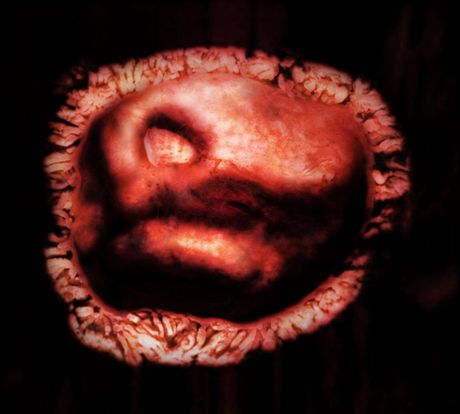3 weeks and 5 days pregnant

The first stage of placental development – your baby’s life support system – is shown here. The image shows nuclei (blue) within a continuous network of cells that will become the placental villi. At first the tiny villi are solid; later, they will contain blood vessels.
As the fertilized egg becomes completely embedded in your uterus, it may cause some light bleeding.
The ball of cells, known as the blastocyst, that will form the embryo has now completely embedded within the lining of the uterus and the lining has regenerated over it.
Unfortunately, in the complex process of conception, only about half of all fertilized eggs progress to become a blastocyst and only about half of these go on to become successfully implanted in the uterus.
When the blastocyst embeds, there may be some bleeding, known as “spotting”. This often leads to confusion regarding the dating of the pregnancy, not least because it can occur around the time that you would normally start your period.
The colour of the blood can vary. In most cases it is pinkish, although bright red blood (fresh blood) can occur, as can brownish, old blood. As long as it is not profuse, the colour really doesn’t matter. If the bleeding lasts for a short period, and you don’t experience discomfort, it’s likely that things are just fine, but do see your doctor for a checkup.
Around 25 per cent of women will experience some bleeding in early pregnancy, but most go on to full-term. However, in some cases, bleeding does mean a miscarriage is occurring so do always report the fact that you’ve bled to your doctor or midwife.

This computer-generated image shows the ball of cells – the blastocyst – as it appears situated within the uterus. The outer ring of interconnected cells that will eventually form the placenta is clearly seen.
It is thought that around 50 per cent of pregnancies might miscarry before implantation.
Up to a third of pregnancies miscarry up to the fifth week and around a quarter will end in miscarriage between the fifth and seventh weeks. Thankfully, the risk of miscarriage becomes much lower as the weeks go by, decreasing dramatically after the 12th week of pregnancy.
In common with many parents, you probably thought long and hard about trying to conceive your second child. There’s no ideal age gap between children, but consider:
You are in “baby mode” and will be used to the routine and all aspects of babycare. You will have all the equipment you need from bottles through to a pram and cot.
A two-year-old might find it easier to accept his new sibling than a four-year-old who is much more conscious of having the sole attention of his parents.
There will always be squabbles, but children close in age tend to play better together.
It’s tiring looking after a one- or two-year-old while pregnant.
It can put a strain on your body to have pregnancies close together.
If you have a second baby before the first one can walk, you could be doing a lot of carrying, increasing the chance of backache.
You won’t have as much time to get to know your first child before your second is on the scene.
Be the first to support
Be the first to share
Comment (0)
Related Blogs & Vlogs
No related events found.
Loading more...